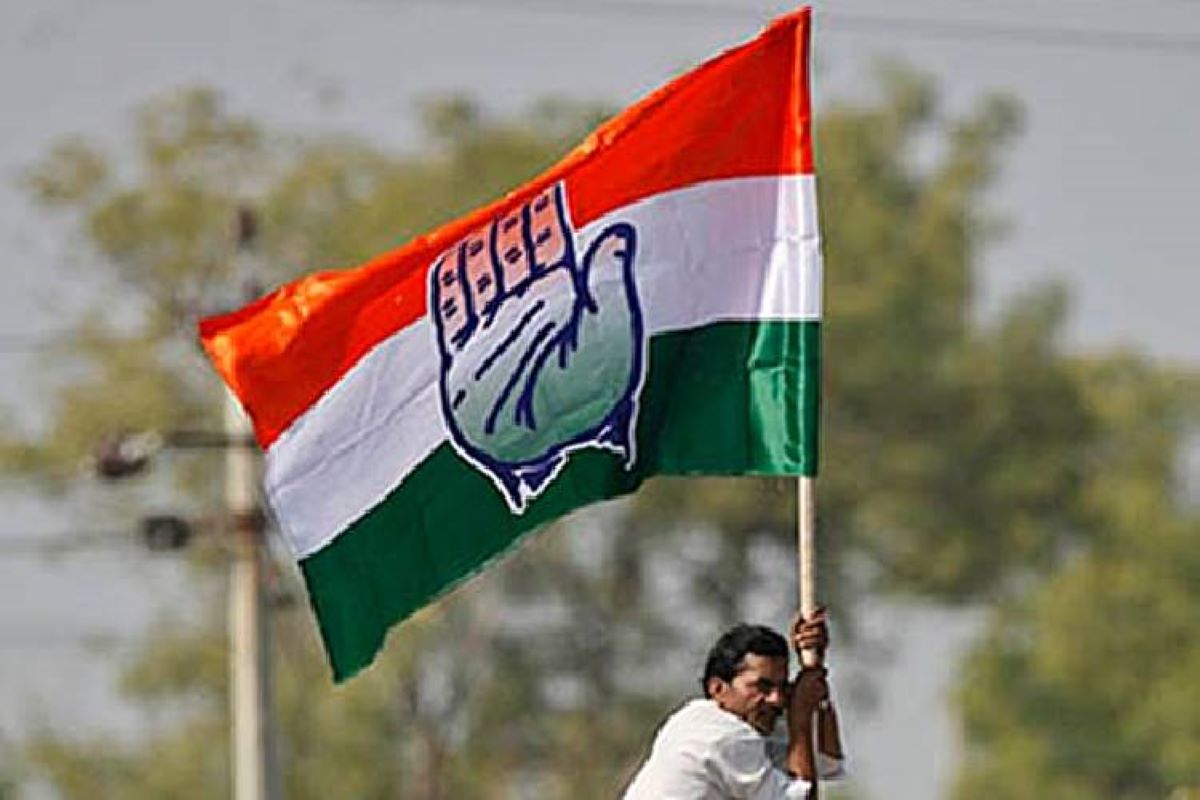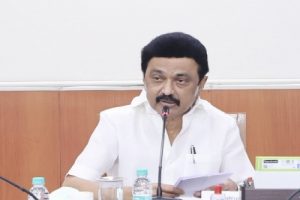The editorial “As We Wait” (9 March 2022) rightly pointed out that regional parties were losing their predominance in State assemblies, with Tamil Nadu being the only State where the ruling party and the main opposition were not national parties.
Axiomatically, fortunes of regional and national parties diverge, and the interplay between their fortunes defines the Indian polity. The emergence of almost all regional parties is in some way connected with developments within the Congress Party, which needed to reinvent itself once its prime aim of ousting the British was achieved. In fact, the postIndependence role of Congress Party was being debated by its leadership since 1946.
Advertisement
Most leaders, including Congress president Acharya JB Kripalani wanted a re-orientation of the Congress party but there was no consensus between leaders; all perceiving the organisation and ideology of the re-imagined Congress Party differently ~ ranging from socialism by Ram Manohar Lohia to capitalism by C Rajagopalachari and a Gandhian system by many others.
Three days before his assassination, Mahatma Gandhi wrote that the Congress Party should be disbanded and should “flower into a Lok Sevak Sangh.” I hasten to add that the Mahatma never wanted Congress Party to die but only wanted a reorganisation, because on the same day he wrote in the Harijan: “Indian National Congress which is the oldest national political organisation and which has after many battles fought her non-violent way to freedom, cannot be allowed to die. It can only die with the nation.”
Because of the disturbed conditions at the time of Independence, the Congress continued with little change in its ethos or unitary organisation. Resultantly, many leaders started chafing under Nehru’s dominance, and broke away from the Congress. The first were the Socialists; Congress Socialist Party leaders like Jayaprakash Narayan and Acharya Narendra Dev broke away to form the Socialist Party in 1948. Next to leave, in 1951, were former Congress president JB Kripalani and Prafulla Chandra Ghosh and T Prakasam, former Chief Ministers of West Bengal and Madras respectively, who formed the Kisan Mazdoor Praja Party.
Then, Swatantra Party was formed in 1959 by leaders of the eminence of Rajagopalachari, Prakasam and KM Munshi. Despite being dwarfed by the Congress, these breakaway parties were not regional outfits but had a pan-India footprint. Historically, the first regional party to be formed in North India was the Shiromani Akali Dal (1920), followed by the J&K National Conference (1932).
In the South, the first regional parties were the Justice Party (1917) and the Self Respect Movement (1925), which combined to form Dravidar Kazhagam, which in turn, gave birth to Dravida Munnetra Kazhagam (DMK) in 1949, which again split to form AIADMK in 1972.
Regional parties came into being in several States after Independence, like the Ganatantra Parishad in Odisha, which was the first regional party to form a Government in a State in 1959. Regional parties came into their own in 1967, when for the first time, Congress lost power in seven of the sixteen States that went for elections. Kerala elected a Communist coalition and Orissa had a Swatantra party dominated Government. The DMK got an absolute majority in Madras ~ the first non-Congress party to achieve this distinction. West Bengal had a Bangla Congress CM supported by Communists. Bihar and Punjab, too, put non-Congress coalitions in power.
Initially, Congress, which was the largest party, formed the government in Uttar Pradesh but Chaudhary Charan Singh soon defected from Congress to form Bhartiya Kranti Dal, and become the first non congress CM of UP. Regional parties started gaining importance in the late 1980s and early 1990s, mostly as a consequence of the acceptance of the Mandal Commission report. As of now, there are 54 recognised State Parties and an equal number of unrecognised parties.
Regional parties are ruling, either on their own or in alliance with a national party, or with other parties, in almost the entire South, entire North-East except Assam, and in Odisha, Maharashtra, Bihar and Haryana. Yet, the importance of regional parties is slowly coming down, with national parties gaining ground. The reason is not far to seek; most regional outfits are caste-based with limited vision and notoriously corrupt in the bargain. With increasingly aware voters, regional parties would have to reinvent themselves in the AAP template, that is by claiming to provide better governance.
The election results have validated the main conclusion of the editorial viz. reports of the death of national parties were highly exaggerated. However, after declaration of election results a further conclusion can be drawn viz. the oldest national party is in ICU and will soon be moribund if proper medicine is not administered. This is self-evident because the Congress has been almost wiped out in all States that went to the polls, despite being the ruling party till recently in all States except UP, where it was a minor player for the last many years.
The election results unquestionably demonstrate that the public has voted for change. All erstwhile political bigwigs of Punjab like the Badals, Amarinder Singh, Sidhu, Channi et al, have lost ignominiously. So have ten cabinet ministers in UP and the Uttarakhand Chief Minister, despite the BJP winning handsomely in the state. Perhaps, in all States, the public has voted out leaders perceived to be incapable of good governance. The BJP won in four states only because they offered a cohesive roadmap for the future, combined with a demonstrated ability to deliver results, despite the fact that quite a few have reservations about BJP ideology.
Similarly, AAP won on the promise of good governance; Delhi is sufficiently connected with Punjab for the Punjab electorate to be aware of the AAP model operating in Delhi. In stark contrast, the Congress offered a model of governance that had been rejected repeatedly starting from 2014. In any case, BJP was offering much of the same, enhanced with the bells and whistles of Hinduism.
Interestingly, the caste factor operated differently in different States; remaining dormant in Punjab, where armchair analysts had predicted that the anointment of Channi as CM, would get Congress the 31 per cent SC votes. Actual results show that far from delivering gift-wrapped SC votes, Channi could not even save his own seats. On the other hand, Jat Sikh leaders of Congress and SAD like Amarinder Singh, Badals and Sidhu also bit the dust. However, caste arithmetic did sway elections in UP.
Some days before the Exit Polls, an internal survey of a political party based on the caste composition of individual constituencies went viral. Interestingly, actual election results mirrored the survey predictions. Most probably, the SP could not shake off its image as a caste-based party. Ergo, voters of other castes, remembering the dominance of a particular caste during SP days, did not vote for SP.
Learning a lesson from earlier elections, Rahul Gandhi and Priyanka Vadra, campaigned hard in the present elections but somehow, they could not shrug off their princely image, which hindered their connect with the public. It did not help that the Gandhis had no skin in the game, being able to appoint and dismiss Chief Ministers, without being in the actual contest in any manner.
Additionally, the Gandhis were not able to project the Congress as a serious alternative in UP, which meant that anti-BJP votes went to other parties. Evidently, a lot of effort would be required even to keep the Congress alive. The UP elections call for introspection from all political parties, as also the Election Commission. Entire candidate lists of most parties were prepared only on considerations of caste and community and the pitch to voters was on the same lines.
Electoral discourse touched its nadir with rivals calling each other ‘mafia,’ ‘Pak agent’ and much worse. Most parties promised targeted sops, and freebies; competitive populism, hyper-nationalism, hyper-religiosity, and a vote-gathering appeal to regional pride appeared to be the mainstay of the election campaign, with politicians shamelessly trying to create a ‘we’ versus ‘they’ binary.
Now, with elections over, one hopes that Government formation would not be delayed, and legislators would honour the trust reposed in them by the electorate. Due to the Covid-19 pandemic and other reasons the economies of all States are in doldrums; the least the winners can do is not to treat the election as an end in itself but as a means of providing good governance to their constituents.
(The writer is a retired Principal Chief Commissioner of Income-Tax)











